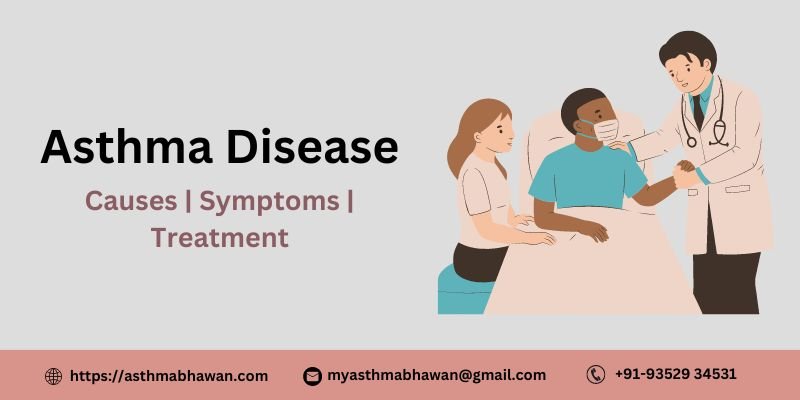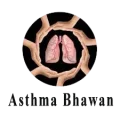
Asthma disease is a chronic condition of the lungs, which if left untreated, worsens with time. It narrows down the airways due to inflammation and causes difficulty in breathing. It is also referred to as ‘bronchial asthma’ because of inflammation in bronchial tubes. This inflammation is followed by the deposition of extra thick mucus. Symptoms of asthma disease begin to appear after:
- Blockage of Airways: The muscles around the airways tighten up, making it hard for the air to pass through, unlike normal breathing patterns where muscles are relaxed, allowing air to move freely.
- Inflammation: Redness and swelling in the bronchial tubes gradually cause damage to the lungs. This inflammation is followed by secretions of extra thick mucus. This sticky secretion blocks the pathway of air.
- Irritability: People with asthma disease have sensitive airways which get triggered by a variety of allergens. Because of the asthma disease, the pathway becomes over-sensitive and overreacts to the asthma triggers.
Causes and Triggers of Asthma Disease:
Because of increased sensitivity, asthma disease gets triggered in patients by the things present around us in the environment. Different asthma triggers are as follows:
- Allergens such as pollens, dust mites, and molds.
- Pollutants in the air.
- Strong fragrances.
- Panic or anxiety attacks.
- Exercises.
- Weather conditions such as a cold.
- Respiratory infections.
These triggers can induce asthma attacks and flare-up symptoms of asthma diseases in the patients suffering from them. Asthma Disease can lead to COPD also, known as Chronic Obstructive Pulmonary Disease.
Symptoms of Asthma Disease:
The most common symptom of asthma disease is the wheezing or whistling sound that occurs during breathing. Other symptoms include:
- Congestion
- Coughing, which intensifies at night or during any physical activity
- Shortness of breath
- Rapid breathing
- Frequent infections
- Fatigue
Also read: Symptoms of Seasonal Asthma
Treatments for Asthma Disease:
Asthma disease treatments include a mix of medication, therapies, and lifestyle changes. Both quick relief and long-term asthma control medications are provided to ease the body’s conditions for immediate and long-term relief.
Immediate relief is provided to improve conditions after an asthma attack and lets you breathe again normally. Most commonly, bronchodilators are used for providing quick relief to patients with asthma disease and are taken along with inhalers or nebulizers, they can also be administered orally or can directly injected. People with advanced conditions of this disease are advised to take inhalers before any physical work to stop the worsening of their condition, thereby preventing asthma attacks.
The severity of the diseases and asthma attacks, in the long run, can be prevented by long-term asthma control medications, including anti-inflammatories, anticholinergics, etc. Anti-inflammatories control and reduce inflammation making it easier for a person to breathe. Anticholinergics are taken along with anti-inflammatories, and they prevent the muscles from tightening around the airways.
Lifestyle changes are also advised for patients with asthma disease to improve their quality of life, such as:
- Avoiding outdoor activities in areas with high pollution.
- Covering your face outdoors to prevent inhalation of harmful gases should be a part of your routine.
- Keeping your inhalers handy.
- Keep a check on regular medication.
- Eat healthily.
- As advised by the health expert, follow the exercises suggested for lung health.
You can also read: Childhood Asthma – Symptoms, Diagnosis, and Treatment
Hence, consult for more Treatment for Asthma disease, allergies, and Respiratory Patients or call us on the emergency line (+91) 9352934531 to know more about Asthma Disease or you can visit Asthma Bhawan.

